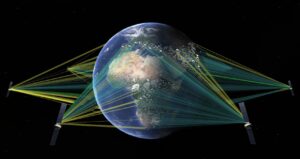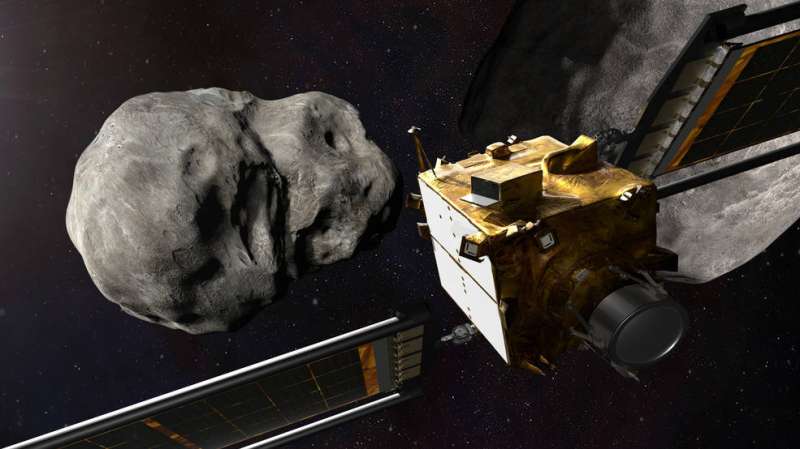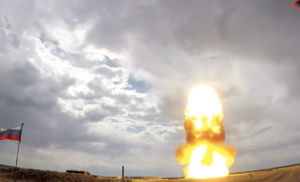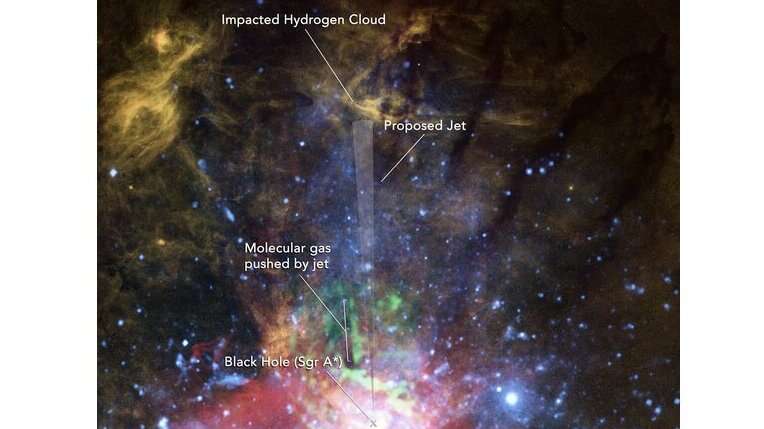Los Alamos National Laboratory awards satellite mission contract to NanoAvionics US
Friday, 10 December 2021 06:18 Smallsat mission integrator NanoAvionics US has received a mission contract by Los Alamos National Laboratory (LANL), one of the largest science and technology institutions in the world. The 12U (1U equals 10 + 10 + 10 cm3) spacecraft, about the size of a microwave oven, will host the Mini Astrophysical MeV Background Observatory (MAMBO) mission.
The goal of MAMBO is to make the best-eve
Smallsat mission integrator NanoAvionics US has received a mission contract by Los Alamos National Laboratory (LANL), one of the largest science and technology institutions in the world. The 12U (1U equals 10 + 10 + 10 cm3) spacecraft, about the size of a microwave oven, will host the Mini Astrophysical MeV Background Observatory (MAMBO) mission.
The goal of MAMBO is to make the best-eve Kleos' Patrol Mission Satellites Ready and Shipped to Launch Site
Friday, 10 December 2021 06:18 Kleos Space S.A, a space-powered Radio Frequency Reconnaissance data-as-a- service (DaaS) company, confirms its Patrol Mission (KSF2) satellites are on track to launch onboard the
Transporter-3 SpaceX mission in January 2022, successfully passing the final technical milestone with satellite builder Innovative Solutions In Space (ISISPACE).
The Patrol Mission satellites are travelling
Kleos Space S.A, a space-powered Radio Frequency Reconnaissance data-as-a- service (DaaS) company, confirms its Patrol Mission (KSF2) satellites are on track to launch onboard the
Transporter-3 SpaceX mission in January 2022, successfully passing the final technical milestone with satellite builder Innovative Solutions In Space (ISISPACE).
The Patrol Mission satellites are travelling Sol 3320: Flexibility is Key
Friday, 10 December 2021 06:18 Curiosity is currently located within "Maria Gordon notch," which is a rather tight canyon surrounded by high rock walls located at the transition onto the Greenheugh Pediment. Her views are currently magnificent - steep walls surround Curiosity and cast some rather dramatic shadows onto the workspace.
However, despite the beautiful views, today was a sobering lesson in the complexities of
Curiosity is currently located within "Maria Gordon notch," which is a rather tight canyon surrounded by high rock walls located at the transition onto the Greenheugh Pediment. Her views are currently magnificent - steep walls surround Curiosity and cast some rather dramatic shadows onto the workspace.
However, despite the beautiful views, today was a sobering lesson in the complexities of NASA Goddard helps ensure asteroid deflector hits target
Friday, 10 December 2021 06:18 Although the chance of an asteroid impacting Earth is small, even a relatively small asteroid of about 500 feet (about 150 meters) across carries enough energy to cause widespread damage around the impact site. NASA leads efforts in the U.S. and worldwide both to detect and track potentially hazardous asteroids and to study technologies to mitigate or avoid impacts on Earth.
If an asteroid
Although the chance of an asteroid impacting Earth is small, even a relatively small asteroid of about 500 feet (about 150 meters) across carries enough energy to cause widespread damage around the impact site. NASA leads efforts in the U.S. and worldwide both to detect and track potentially hazardous asteroids and to study technologies to mitigate or avoid impacts on Earth.
If an asteroid Lower atmospheric processes are crucial to understanding Martian water loss
Friday, 10 December 2021 06:18 Lower atmospheric processes, such as convection, dust storms and gravity waves, are vital to understanding how Mars lost its water, writes Erdal Yigit in a Perspective. It's widely thought that most of Mars' water was slowly lost to space as hydrogen over several billion years.
According to standard models, water molecules, broken apart by sunlight in the lower Martian atmosphere, form fre
Lower atmospheric processes, such as convection, dust storms and gravity waves, are vital to understanding how Mars lost its water, writes Erdal Yigit in a Perspective. It's widely thought that most of Mars' water was slowly lost to space as hydrogen over several billion years.
According to standard models, water molecules, broken apart by sunlight in the lower Martian atmosphere, form fre NASA's eventual farewell to tiny Mars helicopter could be emotional
Friday, 10 December 2021 06:18 Tears most likely will flow at NASA's Jet Propulsion Laboratory in Pasadena, Calif., when the extremely successful Mars helicopter Ingenuity sends its last transmission and goes quiet on the Red Planet, according to those who have observed similar closures.
While the end of any space mission can be emotional simply because of a sudden change in routines and departure of colleagues, Ingenui
Tears most likely will flow at NASA's Jet Propulsion Laboratory in Pasadena, Calif., when the extremely successful Mars helicopter Ingenuity sends its last transmission and goes quiet on the Red Planet, according to those who have observed similar closures.
While the end of any space mission can be emotional simply because of a sudden change in routines and departure of colleagues, Ingenui Webb telescope aims to answer astronomy's 'biggest questions'
Friday, 10 December 2021 06:18 It's been three decades in the making: the largest and most powerful telescope ever to be launched into space is finally ready to take up its orbit and beam back new clues to the origins of the Universe and Earth-like planets beyond our solar system.
NASA's James Webb Space Telescope, named for a former director of the American space agency, follows in the footsteps of the legendary Hubble -
It's been three decades in the making: the largest and most powerful telescope ever to be launched into space is finally ready to take up its orbit and beam back new clues to the origins of the Universe and Earth-like planets beyond our solar system.
NASA's James Webb Space Telescope, named for a former director of the American space agency, follows in the footsteps of the legendary Hubble - James Webb Space Telescope: A giant leap towards 'other Earths'?
Friday, 10 December 2021 06:18 There is only one Earth... that we know of.
But outside our own solar system, other stars give warmth and light to planets and, possibly, life.
Soon to offer a better look at these so-called exoplanets is NASA's new James Webb telescope, which is set to launch this month and become the largest and most powerful observatory in orbit.
One of its major missions is to look for conditions
There is only one Earth... that we know of.
But outside our own solar system, other stars give warmth and light to planets and, possibly, life.
Soon to offer a better look at these so-called exoplanets is NASA's new James Webb telescope, which is set to launch this month and become the largest and most powerful observatory in orbit.
One of its major missions is to look for conditions Webb telescope to look for first light of cosmic dawn
Friday, 10 December 2021 06:18 Peering into deep space and billions of years back in time, the James Webb telescope promises to offer the clearest glimpse yet of the Universe's cosmic dawn, when the earliest galaxies began to form.
The largest and most powerful telescope ever to be launched into space, which will take over from Hubble, will "directly observe a part of space and time never seen before", says NASA.
Th
Peering into deep space and billions of years back in time, the James Webb telescope promises to offer the clearest glimpse yet of the Universe's cosmic dawn, when the earliest galaxies began to form.
The largest and most powerful telescope ever to be launched into space, which will take over from Hubble, will "directly observe a part of space and time never seen before", says NASA.
Th NASA launches new mission to explore universe's most dramatic objects
Friday, 10 December 2021 06:18 NASA's Imaging X-ray Polarimetry Explorer (IXPE) mission launched at 1 a.m. EST Thursday on a SpaceX Falcon 9 rocket from NASA's Kennedy Space Center in Florida.
A joint effort with the Italian Space Agency, the IXPE observatory is NASA's first mission dedicated to measuring the polarization of X-rays from the most extreme and mysterious objects in the universe - supernova remnants, superm
NASA's Imaging X-ray Polarimetry Explorer (IXPE) mission launched at 1 a.m. EST Thursday on a SpaceX Falcon 9 rocket from NASA's Kennedy Space Center in Florida.
A joint effort with the Italian Space Agency, the IXPE observatory is NASA's first mission dedicated to measuring the polarization of X-rays from the most extreme and mysterious objects in the universe - supernova remnants, superm South Australia’s Oculus Observatory hosts passive radar to track space objects
Friday, 10 December 2021 01:20
South Australia’s Oculus Observatory, which opened Dec. 9, houses the first in a planned global network of passive radars to track objects in orbit.
DoD has to explain to Congress how it will buy low-latency satellite broadband
Friday, 10 December 2021 00:03
The 2022 NDAA directs the Pentagon to brief lawmakers on military use of commercial satellite communications services, specifically those from non-geostationary orbit satellites.
NASA Goddard helps ensure asteroid deflector hits target, predicts and will observe impact results
Thursday, 09 December 2021 20:37
Although the chance of an asteroid impacting Earth is small, even a relatively small asteroid of about 500 feet (about 150 meters) across carries enough energy to cause widespread damage around the impact site. NASA leads efforts in the U.S. and worldwide both to detect and track potentially hazardous asteroids and to study technologies to mitigate or avoid impacts on Earth. If an asteroid were discovered and determined to be on a collision course with Earth, one response could be to launch a "kinetic impactor"—a high-velocity spacecraft that would deflect the asteroid by ramming into it, altering the asteroid's orbit slightly so that it misses Earth. NASA's Double Asteroid Redirection Test (DART) will be the first mission to demonstrate asteroid deflection using a kinetic impactor.
DART will test kinetic impactor technology by targeting a double asteroid that is not on a path to collide with Earth and therefore poses no actual threat to the planet.
On National Security | Russia showed it can attack. Is U.S. Space Force ready to defend?
Thursday, 09 December 2021 20:00
Russia’s anti-satellite missile test has raised calls for the United States and its allies to push for international norms to ban such tests. But reaching an agreement on space arms control could take years or even decades.
Mini-jet found near Milky Way's supermassive black hole
Thursday, 09 December 2021 18:57
Our Milky Way's central black hole has a leak. This supermassive black hole looks like it still has the vestiges of a blowtorch-like jet dating back several thousand years. NASA's Hubble Space Telescope hasn't photographed the phantom jet but has helped find circumstantial evidence that it is still pushing feebly into a huge hydrogen cloud and then splattering, like the narrow stream from a hose aimed into a pile of sand.
This is further evidence that the black hole, with a mass of 4.1 million Suns, is not a sleeping monster but periodically hiccups as stars and gas clouds fall into it. Black holes draw some material into a swirling, orbiting accretion disk where some of the infalling material is swept up into outflowing jets that are collimated by the black hole's powerful magnetic fields. The narrow "searchlight beams" are accompanied by a flood of deadly ionizing radiation.
"The central black hole is dynamically variable and is currently powered down," said Gerald Cecil of the University of North Carolina in Chapel Hill.
